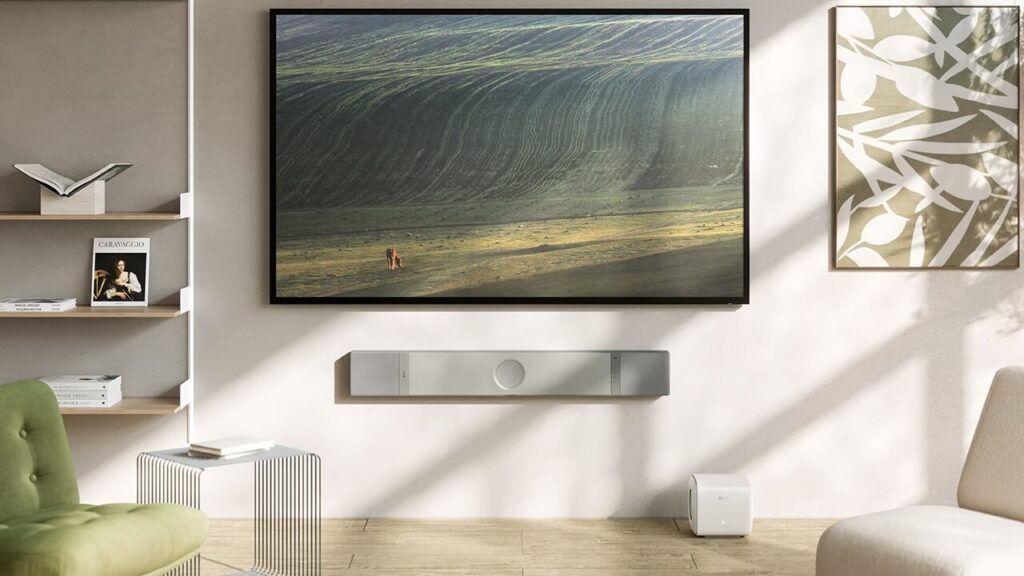It’s taken its sweet time, but finally KEF has thrown its hat into the increasingly congested ‘premium spatial audio soundbar’ ring with this, the XIO.
The list of technical highlights suggests KEF hasn’t exactly been sitting on its hands – but when you consider just how many very capable alternatives are available for less money, it’s obvious the XIO needs to be something special.
Fortunately, with some caveats, the KEF XIO is one very special soundbar indeed – a worthy contender for our best soundbars list, no doubt, if a single-box solution with no separate subwoofer or additional speakers is what you seek.
Price & Availability
The KEF XIO soundbar went on sale in July, and in the United Kingdom it’s priced at £1999. In the United States it goes for around $2499. Meanwhile, in Australia, you’ll need to part with AU$3599.
That’s big money for a single-box soundbar, no two ways about it. But I remember thinking the same thing about Sennheiser’s Ambeo (lately rebadged as ‘Ambeo Max’) when it launched for even more at the start of 2020(!) – a price that didn’t prove too much of an impediment to its sales success…
Features & What’s New?
(Image credit: Future)
There’s plenty that’s new about the KEF XIO. The company has a very proud tradition of innovation, and it will have done its reputation no harm whatsoever with this new soundbar.
The XIO is arranged to deliver a 5.1.2 -channel sound – and it does this by using the appropriate number of physical drivers, rather than relying solely on digital processing to hack an impression of spatial audio.
So there are four P185 low-frequency drivers, arranged in two back-to-back pairs, in an effort to offer the sort of force-cancellation that should minimise unwanted internal vibrations.
These 51 x 180mm ‘racetrack’ drivers feature KEF’s ‘P-Flex’ technology (the carefully designed driver surround that allows an uncommon amount of excursion first seen on the ‘KC’ series of subwoofers), which the company suggests allows each driver to deliver the same sort of bass performance as a more traditional 10cm drive unit.
The six Uni-Q MX drivers are miniature variations on the established KEF Uni-Q theme, but with some interesting additional technology thrown in. Uni-Q drivers usually feature two separate drive units (mid/bass and a tweeter) in a single assembly – but here KEF has used a mechanical crossover that allows each section of the MX’s dual-diaphragm layout to operate independently.
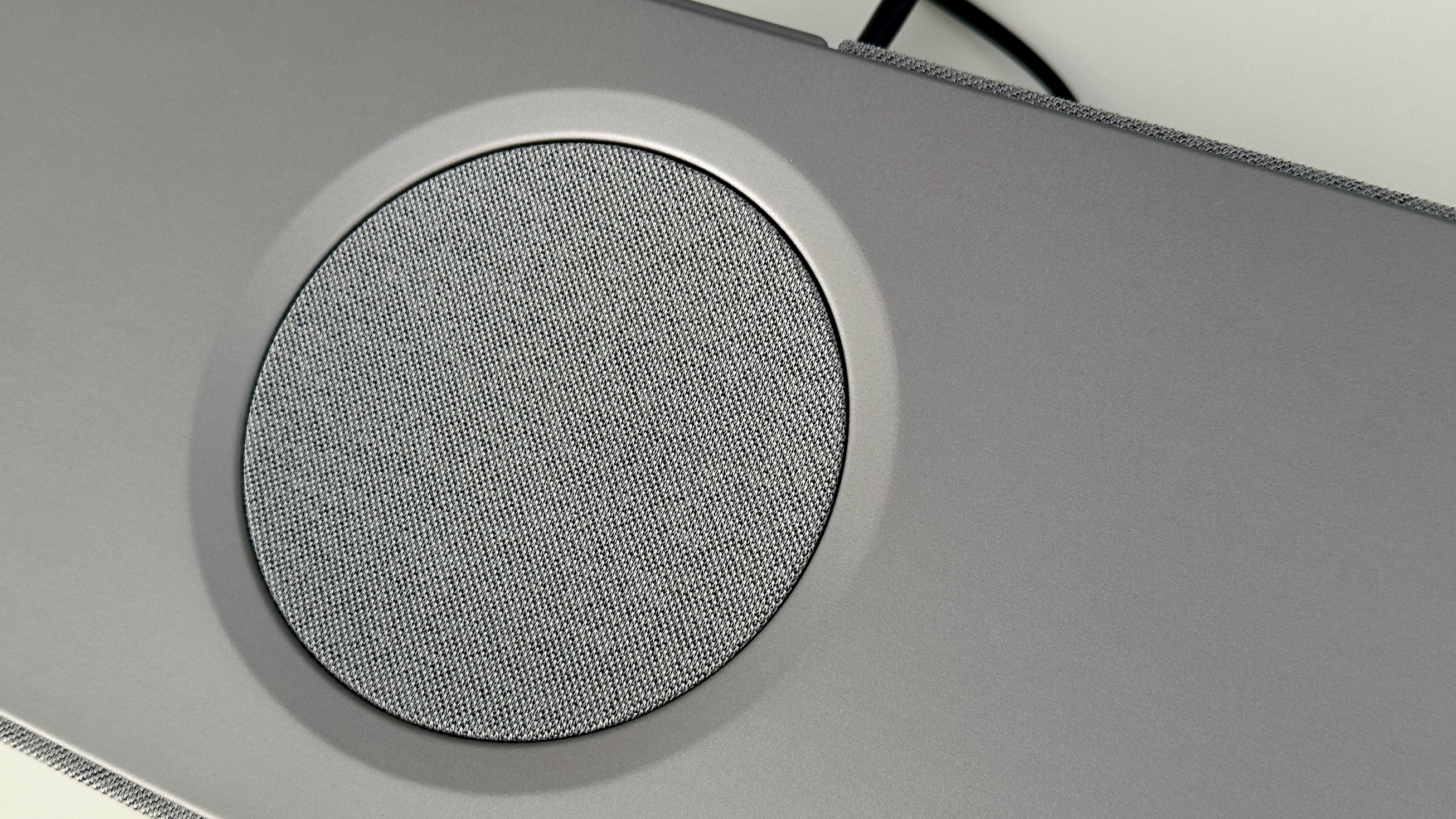
(Image credit: Future)
Three of these drivers face forwards when the XIO is positioned on a shelf, while two fire upwards. Switch to a wall-mounted layout and those three forward-facing drivers now face upwards, while the central driver behind the circle of acoustic cloth now joins in with its two partners in a three-driver forward-facing array.
Two outward-facing full-range drivers of 50mm diameter and more conventional design complete the 12-driver line-up. So, of course, the XIO is fitted with 12 discrete blocks of Class D amplification, and is capable of twisting out a chunky 820 Watts of peak power.
Naturally KEF has deployed a number of technologies in order to bring the best from this layout. ‘VECO’ is ‘velocity control technology’, and it monitors the four P185 low-frequency drivers and generates a negative feedback loop that corresponds to their activity and is designed to minimise distortion.
‘IPT’ (that’s ‘intelligent placement technology’) is fundamentally an auto-calibration tool that helps the soundbar optimise its performance to the specifics of its environment using integrated mics.
Lastly, ‘MIE’ (read as ‘music integrity engine’) is a suite of digital sound-processing algorithms covering multi-channel processing, virtualisation and adaptive placement capabilities – in addition to which there are the more common EQ settings covering the likes of ‘night’, ‘music’, ‘movie’, ‘direct’ and ‘default’.

(Image credit: Future)
Wireless connectivity is covered by Bluetooth 5.3 and, naturally, dual-band Wi-Fi. Physical inputs, meanwhile, consist of a USB socket, digital optical input and a single HDMI 2.1 eARC.
Here is the only area of the XIO’s specification that seems inadequate – if for no reason other than courtesy, an HDMI passthrough would seem a minimum requirement for a soundbar costing two grand. There’s no virtue in mimicking Sonos in these circumstances – every other soundbar with pretensions towards ‘premium’ features an HDMI passthrough, and very useful they are too. It’s an oversight that seems almost wilful.
The XIO hits back, at least a little, with the breadth of its compatibility where audio standards are concerned. This soundbar is compatible with Dolby Atmos, DTS:X and Sony 360 Reality Audio… and support for Airplay Spatial Audio will be along in due course. In addition, the control app offers support for Amazon Music, Deezer, Qobuz, and the ‘Connect’ versions of Spotify and Tidal.
Performance
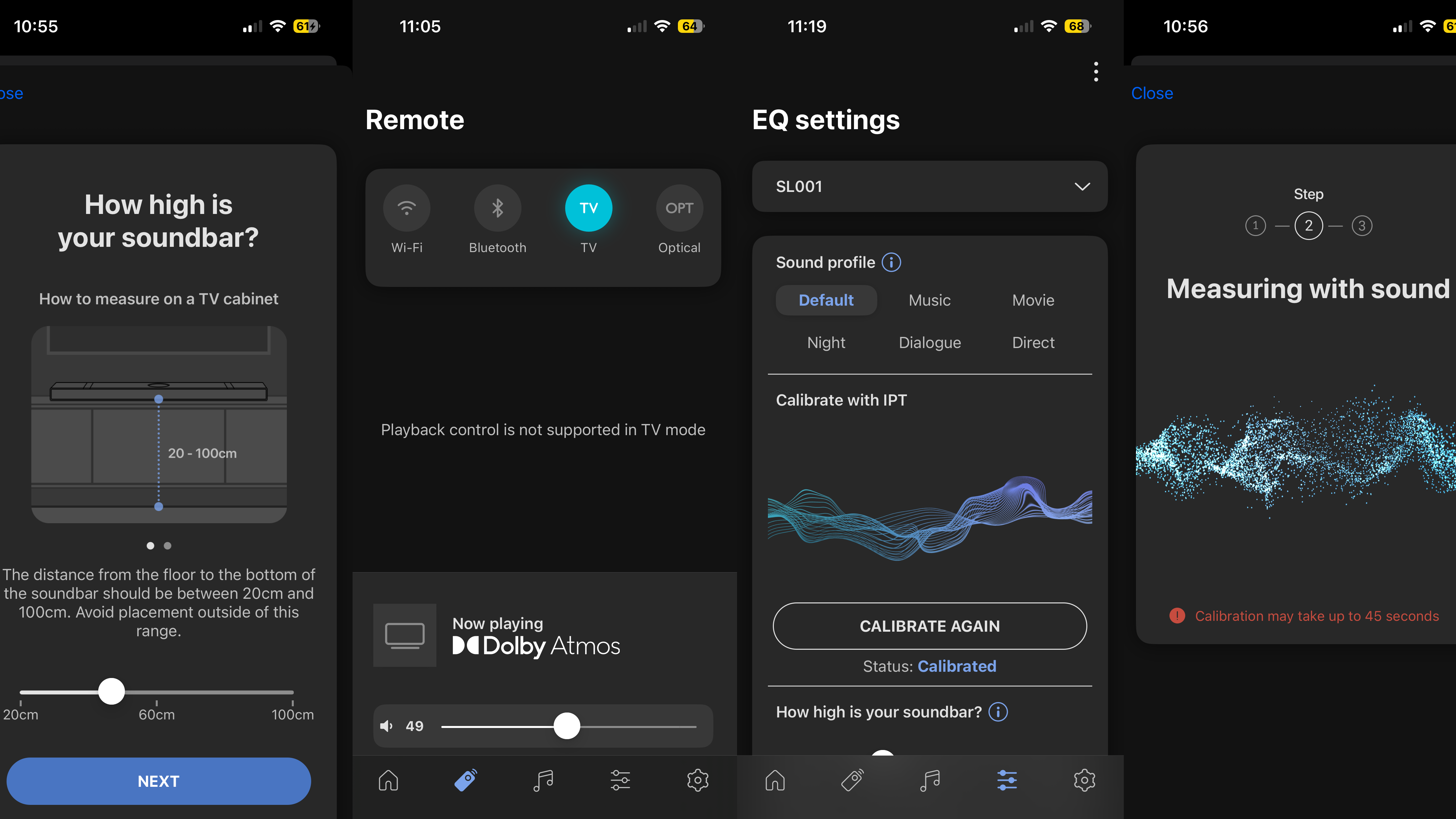
(Image credit: Future / KEF)
It’s not unusual to be pleased, or impressed, by a new product’s performance when it’s plugged in for the first time. It’s less common to be downright startled – and yet that’s how the KEF XIO made me feel on first acquaintance.
And it’s not even anything specific, really, that’s so startling – it’s more a combination of factors. Give the XIO a well-resolved Dolby Atmos movie soundtrack to deal with, either from a streaming service or, ideally, a 4K Blu-ray disc, and its across-the-board performance is really quite remarkable.
Most importantly, the soundstage it creates is big. It extends in every direction until the sound is as enveloping and immersive as a soundbar has ever been capable of delivering – and the effects on the stage are steered with prompt accuracy.
The height – which is basically the whole point of a spatial audio movie soundtrack – is considerable, and even when the going gets complex or involved, there’s more than enough space to let every individual element express itself in comfort.
Detail levels are very high indeed, at every point in the frequency range. There’s chunky bite and shine to the top end, and real positivity through the midrange – so dialogue projects well, is distinct, and carries all the character and attitude intact.
At the bottom of the frequency range, the KEF is capable of low-frequency presence and punch that is, well, startling. It digs very deep, hits with the same sort of authority as a heavyweight boxer, and controls its low-end activity so well that there’s always speed and momentum to the sound.
Yes, the XIO will support a subwoofer – but hear what it can do by itself before you spend any more money.
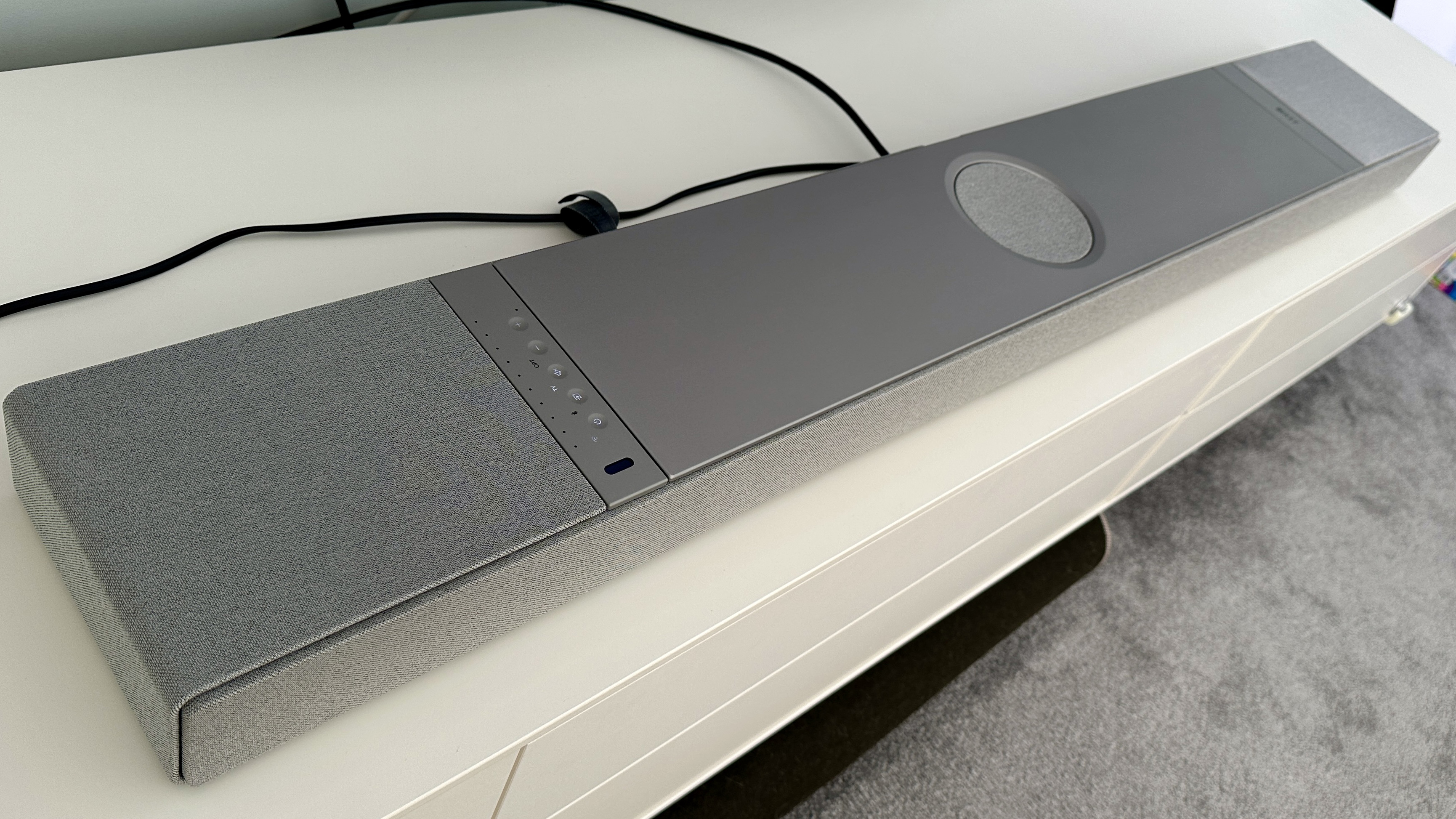
(Image credit: Future)
There’s plenty of dynamic headroom available for when the action really ramps up – 820 watts of peak power can do that for you. And when things get small-scale or intimate, the attention to transient detail and low-order harmonic variations means the KEF always seems to be handing over every shred of information available.
The frequency range hangs together convincingly, so even when it’s all kicking off at the bottom-end, it never threatens to engulf or overwhelm the frequency information above – for a device capable of such formidable bass presence, the KEF is very careful never to oversell it. The tonal balance is nicely neutral, too, so the conic colour and heat of the sound design takes priority.
Switching to music mixed in spatial audio doesn’t faze the XIO in the slightest. It remains poised and informative, absolutely wide-open in terms of soundstaging, and just as willing to absolutely power through the low-end stuff with control and conviction.
And, crucially, it’s a very musical listen as it does so – the spaciousness of the soundstage doesn’t impact on timing, and it does a great job of unifying the output of all those drive units into one coherent whole.
So the KEF proves the exception to the rule that states that soundbars are good only as ‘occasional’ music speakers. The XIO is so adept that it easily stands up as a dedicated music speaker too.
Design & Usability

(Image credit: Future)
The XIO is a pretty big soundbar – at 70 x 1210 x 170mm (HxWxD) – so it’s going to look oversized accompanying any TV of less than 55-inches. But, thanks to the low profile it presents when standing on the same surface as a TV, it’s unlikely to foul the bottom of the screen.
If you wall-mount it, when its dimensions become 170 x 1210 x 70mm (HxWxD), it remains a discreet and, by the standards of big, expensive soundbars, actually a good-looking proposition. It’s 10.5kg, so no kind of hardship.
The combination of aluminium and acoustic cloth helps to minimise the bulk, as do the choices of finish (‘silver’, which is grey, or ‘black’ are available). The standard of build and finish is, as the asking price demands, basically impeccable.
There are three distinct control interfaces available. A smattering of touch-controls on the aluminium top-plate offer access to volume up/down/mute (with a little row of LEDs letting you know how much volume has been dialled in), input selection and power on/off.
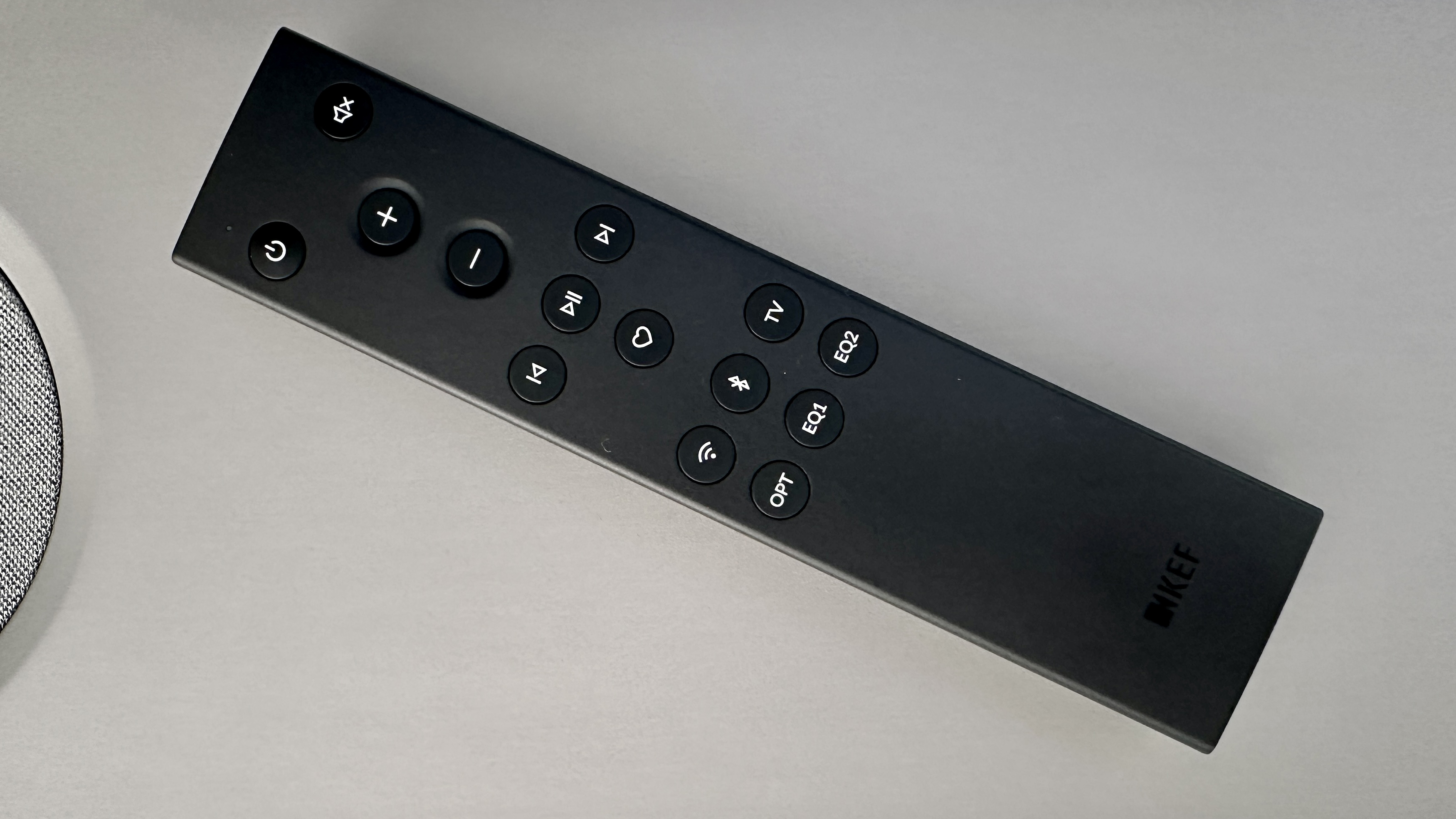
(Image credit: Future)
A remote control handset is provided, and it feels quite nice in the hand – it also controls those three functions, and adds access to a couple of EQ presets, and the basic playback controls of play/pause, skip forwards and skip backwards. It’s not especially responsive, though, and the amount of lag between pressing a button and getting what you ask for is quite disconcerting sometimes.
Happily, the control app that you’ll use most of the time doesn’t have this shortcoming. KEF Connect is a stable, thorough and very usable interface that helps with everything from initial calibration to custom EQ settings. Aside from the inability to control playback when the soundbar is playing via HDMI, it has everything you need.
KEF XIO review: Verdict
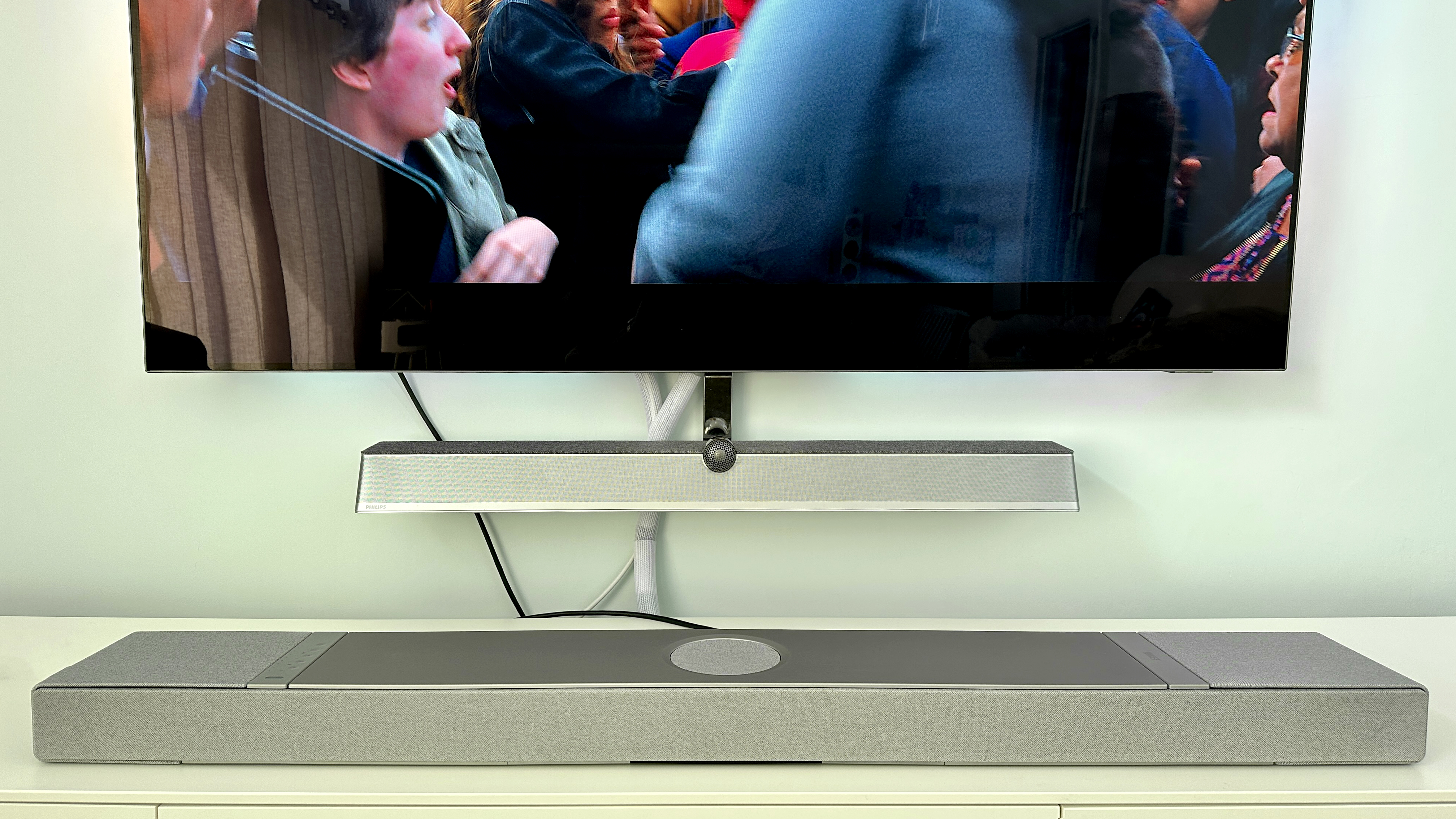
(Image credit: Future)
Part of me just wants to lambast KEF for charging this much for a soundbar with no HDMI passthrough – and I reckon I could make a case for it.
But everything else the XIO does, it does so very well – and it looks so good while it’s doing it, too.
I have to admit I’d have one in my home in a heartbeat – its miserly HDMI count notwithstanding – because single-bar sound quality this good is a rare thing indeed.
Also Consider
If it’s the KEF’s outright scale of sound that appeals, then your best alternative is the huge-sounding (and, let’s face it, huge-looking) Sennheiser Ambeo Max. It’s the OG spatial audio soundbar and it still sounds the business even after half a decade in production – but its lack of HDMI 2.1 compatibility might count against it. Its trio of HDMI sockets most definitely doesn’t, though.


